Dynamic Dutch duo Hella Jongerius and Louise Schouwenberg show us the difference between objects and things
Beyond the New
During Salone del Mobile back in 2015, Hella Jongerius and Louise Schouwenberg launched their manifesto Beyond the New: A Search for Ideals in Design, calling for—among other things—an end to “pointless products, commercial hypes, and empty rhetoric.” Jongerius, the legendary designer and Art Director at Vitra, and Schouwenberg, art and design theorist and head of Contextual Design at Design Academy Eindhoven, created quite a stir with their strongly worded critique of the design industry’s obsession with newness for its own sake, rather than—as Jongerius and Schouwenberg saw it—investing in quality and stimulating true cultural innovation.
Not content to simply bemoan the current state of the industry, nor to move only in the abstract world of academic theorists, the Dutch duo accepted an invitation from Die Neue Sammlung Museum in Munich to translate their anti-novelty manifesto into a site-specific installation in the museum’s prestigious Paternoster Hall, curated by Xenia Riemann-Tyroller. The Jongerius and Schouwenberg exhibition, also titled Beyond the New, just closed in Munich—but, not to worry if you missed it, the project is far from over.
In preparing for the show, Jungerius and Schouwenberg spent a lot of time in the institution’s archives and storage spaces looking at how design is defined through the collection and thinking about whether cultural innovation is possible within a “white cube” museum context. They were searching for, in Schouwenberg’s words, “the essence of design,” “the agency of designs,” and how designs are “robbed of their use value” within institutions. The result was a dense exhibition framed by large-scale, tapestry-like textiles that were woven with questions and cues on how to “read” the work that was presented, including moving mechanical displays; projections that circulated eternally on the paternoster elevators; and an array of iconic furniture pieces, laid flat on the museum floor.
A central subject of the textiles was the role of things vs objects. According to Jongerius and Schouwenberg, it’s the difference between pieces of design in everyday use and pieces squirreled away in rarefied museum environments. Jongerius explains that by weaving these phrases and questions into fabric, rather than placing them on the wall directly, “we show something of the slow and gradual searching process, which characterizes how we continue to search for answers,” thus synthesizing the makers’ theoretical and conceptual concerns with process-based explorations that interface with both traditional craft and hi-tech approaches.
The interplay of craft and tech—alongside Jongerius and Schouwenberg’s assertion that innovation in design must, necessarily, engage both historical and evolving modes of making—was further underscored in several mechanical, kinetic pieces throughout the exhibition. The Possibilities Machine (2016), for instance, takes archetypal forms and turns them into letters, which rotate in front of a lamp, creating a moving silhouette intermittently spelling out the word “possibilities” as it is inversely projected onto an abstract woven piece on the wall behind.
The central space of the installation was taken up by a presentation of iconic cabinets and storage pieces from the likes of Charles & Ray Eames, Ettore Sottsass, and Maarten Baas, all lying flat on their backs on low pedestals. By shifting the position of the pieces from vertical to horizontal, Jongerius and Schouwenberg demarcate these as objects—aestheticized pieces of design intended to be admired in a white cube context—rather than functional things. Walking around the flat pieces, the aesthetics and materiality of the works became more salient, and their functionality—which is, after all, the capacity of design to impact everyday life—redundant. Jongerius has called this “the gap between the experience of functional things in everyday life and the experience of things within the context of a museum."
If that sounds serious, or dry even, rest assured that the exhibition was anything but. It was also playful; joyous; full of a tactile and sensory richness most deliciously represented in Jongerius’ signature textured woven textile wall-hangings. Beyond the New is not simply an exhortation—it is an invitation, as Jongerius says, for the audience to “open their eyes for the multilayeredness of the objects they may take for granted in daily life.” Jongerius and Schouwenberg’s work reminds us to look at the design around us with fresh eyes and to ask questions about our reasons for collecting it in the first place. It reminds us that neither the head nor the hands alone can create true innovation; pushing the envelope of design is a contextualised, iterative, and often a communicative process between the designer and the user, between our interior lives and the external world around us. “I think the best creative process is an alternation of intuitive thinking—with your hands—with profound reflection” Schouwenberg says.
It seems that this dynamic duo of theorist and designer has found the key to overlapping and interlocking reflection and intuition—and they’ve continued expanding their collaborative exploration in several ways. The first is the fantastic publication Beyond the New. On the Agency of Things—a collaboration with graphic designer Irma Boom—which bores further into the relationship and differences between objects and things, and includes hypothetical discussions with Bauhaus giants Walter Gropius, Johannes Itten, and Anni Albers. The book is beautiful, poetic, and absolutely original and comes highly recommended to all design connoisseurs and scholars.
Excitingly, the exhibition side of the project is also continuing; Beyond the New will run at MUDAM in Luxembourg from mid-October until mid-January 2019. This edition will include all of Jongerius and Schouwenberg’s unique works that were presented in Munich, but also a video projection by filmmaker Alexandre Humbert replacing the presentation of cabinets from Die Neue Sammlung’s collection. Instead, Humbert has conducted a deep, filmic investigation of a piece from MUDAM’s collection; the installation Sanatorium Paimio-Mobilier d’une Chambre, designed by Alvar and Aino Aalto in the 1930s. Schouwenberg explains that the work was chosen because of its “many references to the society of that time and… the roles designers can play when confronted with heavy problems such as tuberculosis. Can design alleviate the needs of patients? …And can spectators in a museum, so many years later at a different spot in the world, intuit the roles these items once played in real life?"
I have a sense that Beyond the New is going to be one of those seminal projects that gets taught in design schools years from now. Don’t miss the chance to be part of this new history unfolding.
-
Text by
-
Gretta Louw
A South-African born Australian currently based in Germany, Gretta is a globetrotting multi-disciplinary artist and language lover. She holds a degree in Psychology, and has seriously avant garde leanings.
-
More to Love
Purple & Black Mandarin Chairs by Ettore Sottsass, 1986, Set of 6
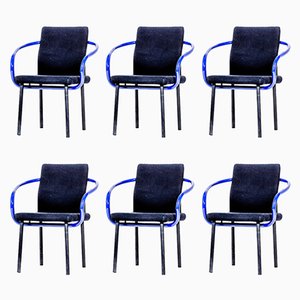
Italian Demistella Console Tables by Ettore Sottsass, Set of 2
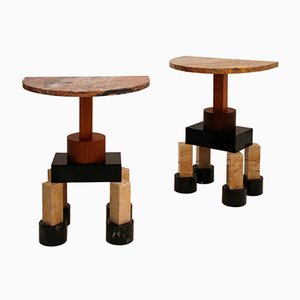
Clay Low Seater by Maarten Baas
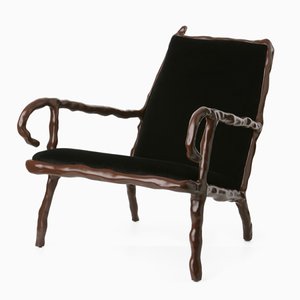
Navy Footed Bowl by Ettore Sottsass for Bitossi
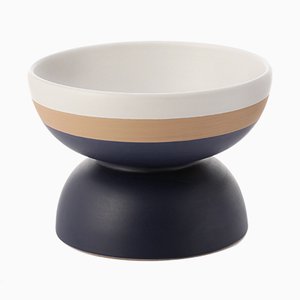
Vintage 36/401 Wingback Lounge Chair by Alvar Aalto for Artek
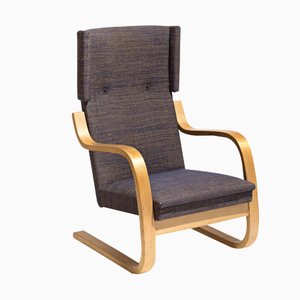
Vintage Bay Table Lamp by Ettore Sottsass for Memphis


